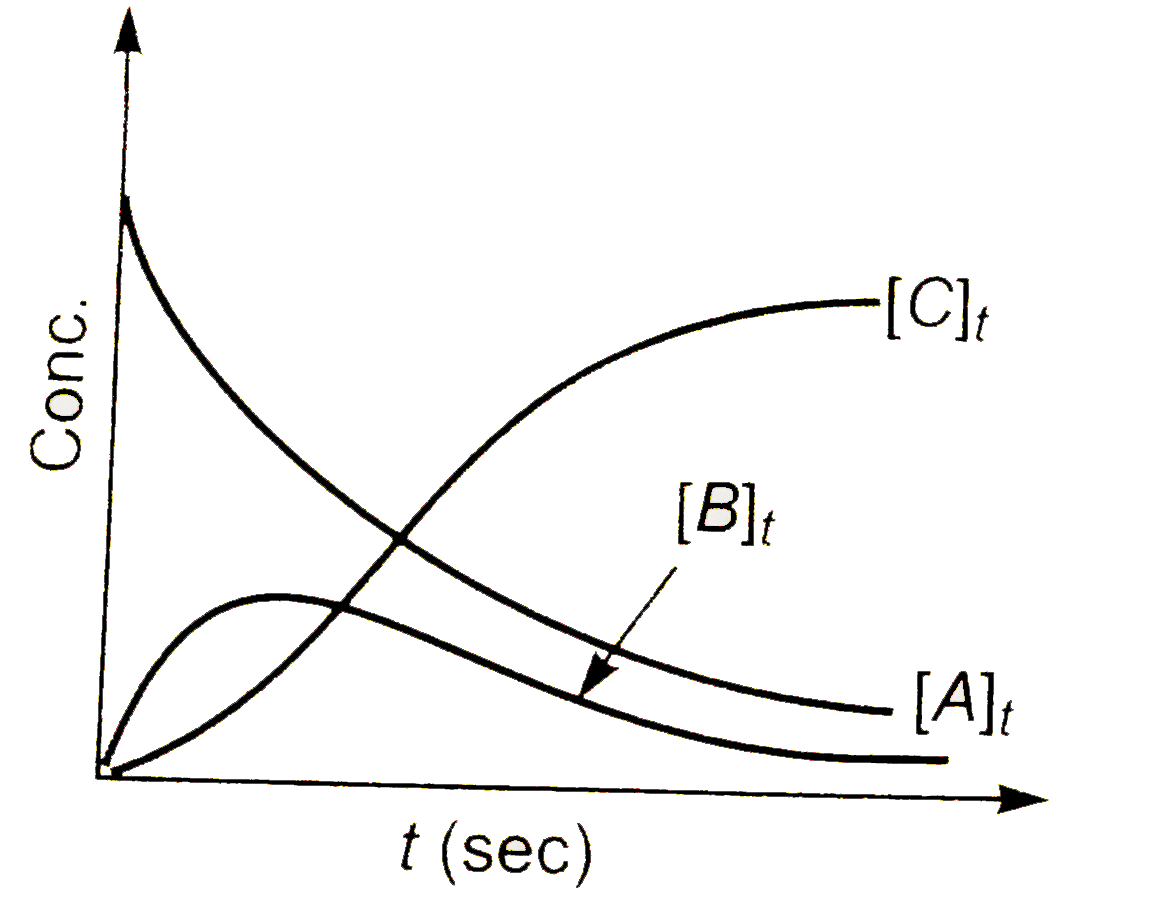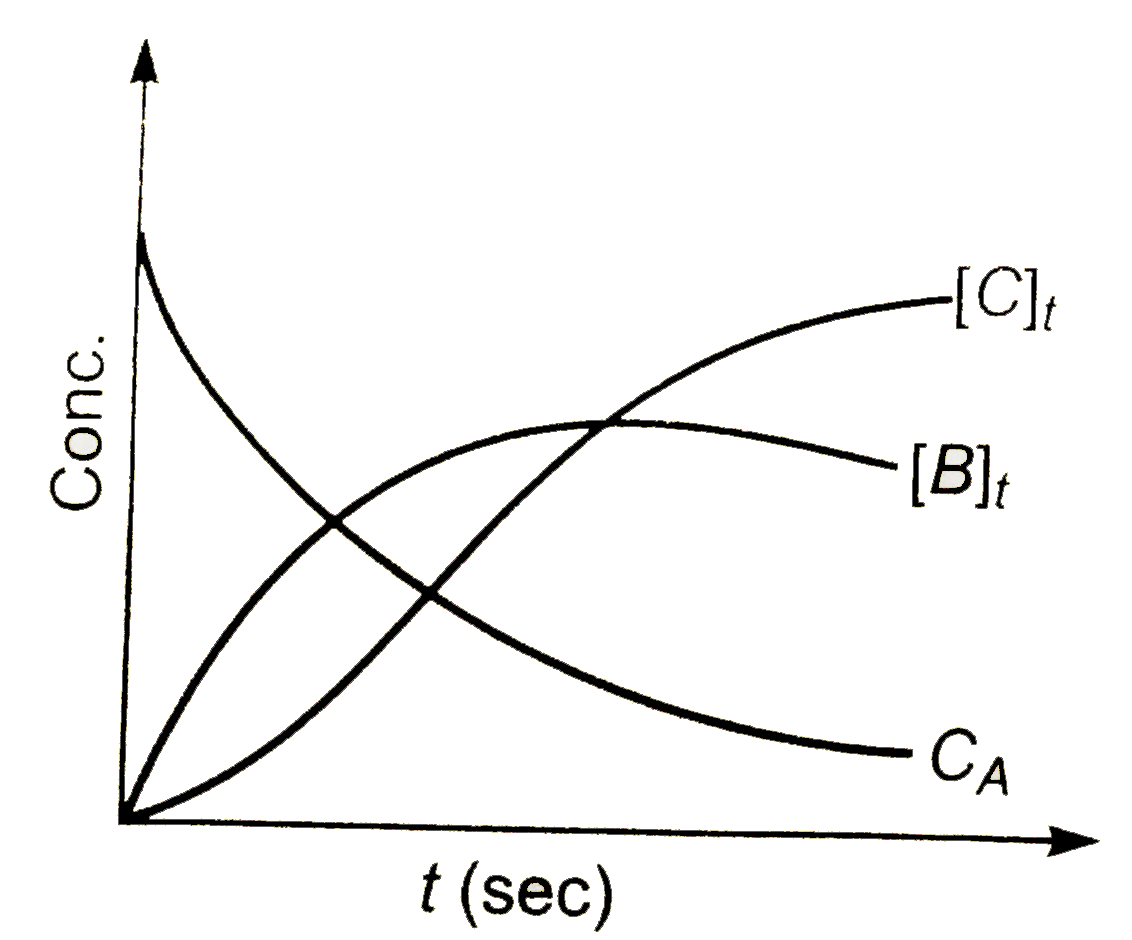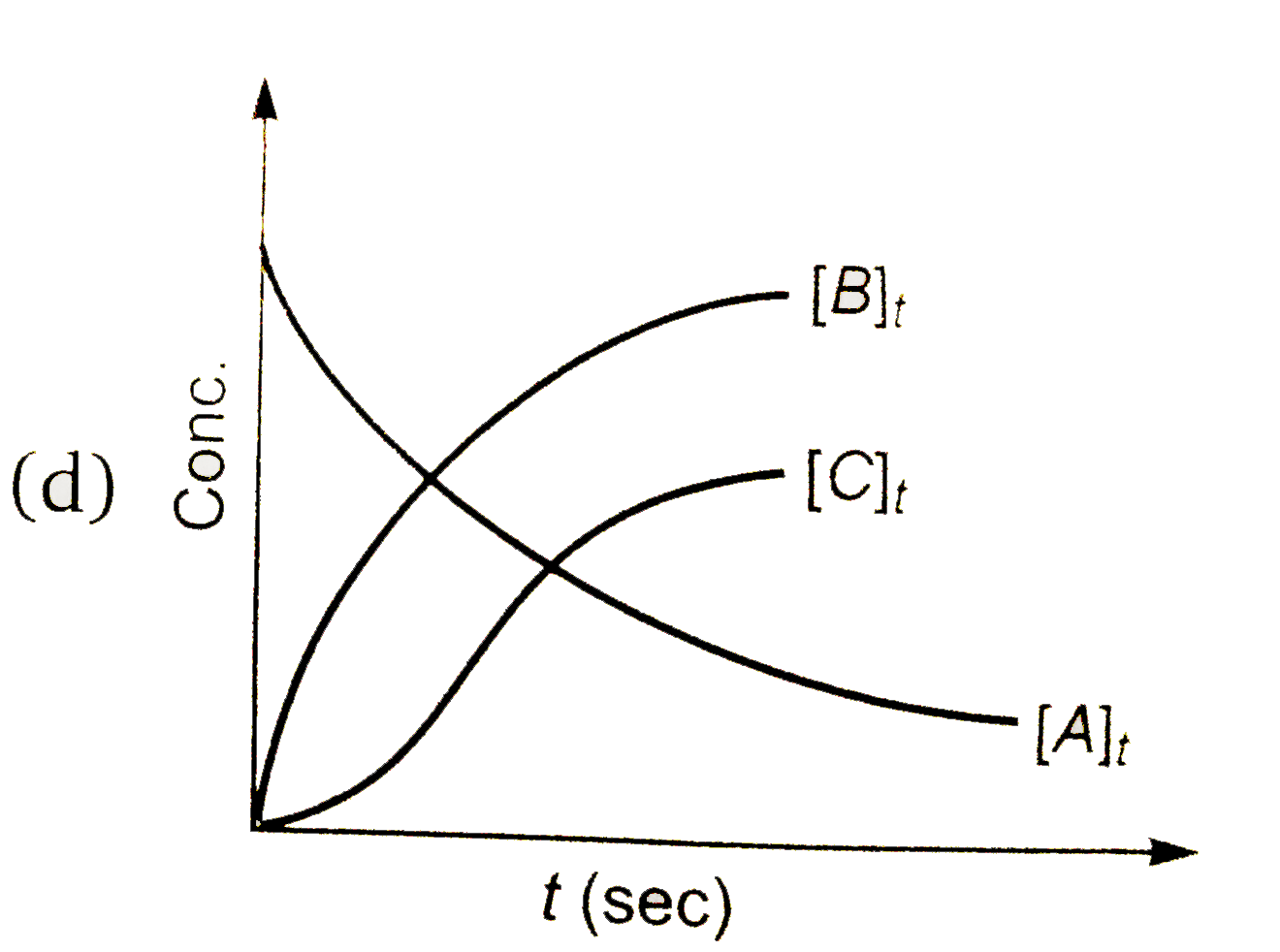AK1−−→BK2−−→C if all the reaction are 1st order and d[B]dt=0. Determine [B].
(K1+K2)[A]
(K1−K2)[A]
(K1×K2)[A]
K1K2×[A]
The correct Answer is:D
Step by step video, text & image solution for Aoverset(K_(1))toBoverset(K_(2))toC if all the reaction are 1^(st) order and (d[B])/(dt)=0. Determine [B]. by Chemistry experts to help you in doubts & scoring excellent marks in Class 12 exams.
Topper's Solved these Questions
Similar Questions
Knowledge Check
- Question 1 - Select One
Two consecutive irreversible fierst order reactions can be represented by
Ak1−−→Bk2−−→C
The rate equation for A is readily interated to obtain
[A]t=[A]0.e−k1t , and [B]t=k1[A]0k2−k1[e−kt1−e−kt2]
When k1=1s−1 and k2=500s−1 , select most appropriate graphA B
B C
C D
D
- Question 2 - Select One
Two consecutive irreversible fierst order reactions can be represented by
Ak1−−→Bk2−−→C
The rate equation for A is readily interated to obtain
[A]t=[A]0.e−k1t , and [B]t=k1[A]0k2−k1[e−kt1−e−kt2]
At what time will B be present in maximum concentration ?AK1K2−K1B1k1−k2 In k1)k2C1k2−k1 In k1)k2Dnone of these - Question 3 - Select One
Two consecutive irreversible fierst order reactions can be represented by
Ak1−−→Bk2−−→C
The rate equation for A is readily interated to obtain
[A]t=[A]0.e−k1t , and [B]t=k1[A]0k2−k1[e−kt1−e−kt2]
Select the corret statement for given reaction:AA decreases linearlyBB rise to a max. and then constantCB rises to a max and the fallsDThe slowest rate of increases of C occuring where B is max
Two consecutive irreversible fierst order reactions can be represented by
Ak1−−→Bk2−−→C
The rate equation for A is readily interated to obtain
[A]t=[A]0.e−k1t , and [B]t=k1[A]0k2−k1[e−kt1−e−kt2]
If k1 and k2 both are almost same then which graph is most suitable ?View SolutionStatement -1: In Ak1−−→Bk2−−→C
If half life of A is very less as compared to B, then, net reaction is A to C with rate constant (k1×k2)
Statement-2: Slowest step is the rate determining step si B to C is rate determining step.View SolutionStudy the parallel first order reaction:
Ak1−−→2B
2Ak2−−→3C
At any time (t≠0) the products contain 40% B and 60% C, by moles .If the overall rate constant for the reaction of A is 0.09−1min ,then value of K1 is :View SolutionConsider the following reactions,
A+Bk1⇐⇒k−1C,C+Bk2−−→D
The rate in terms of −d[B]dt will beView SolutionFor the consecutive reaction Ak1(time−1)−−−−−−−→Bk2(time−1)−−−−−−−→C following curves were obtained depending upon the relative values of k1&k2 .

Now which of the following is the correct match ?View Solution

